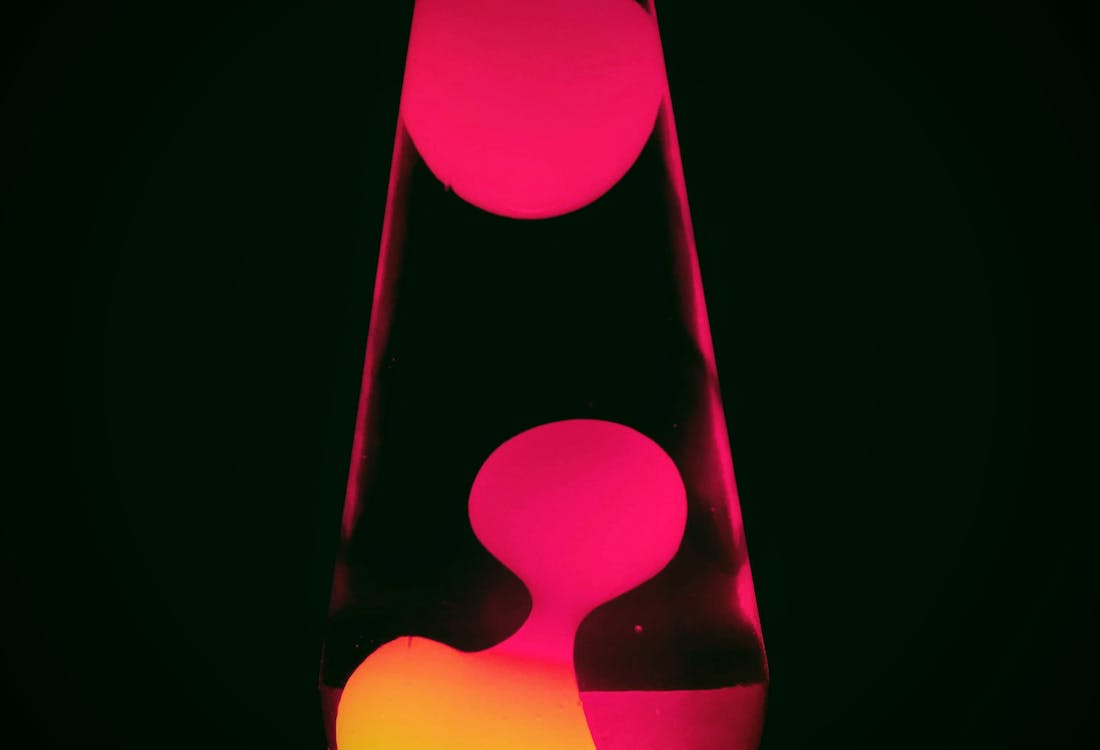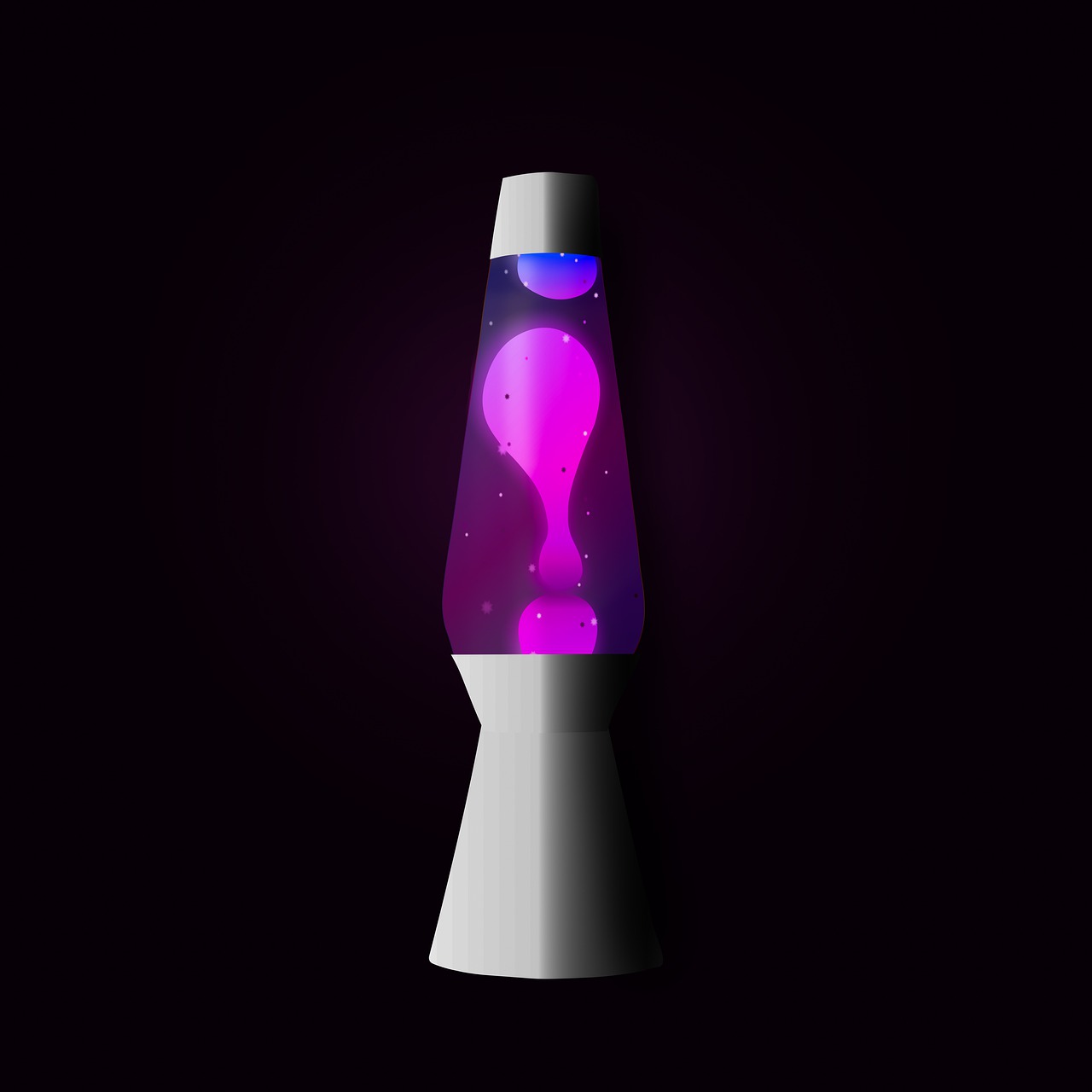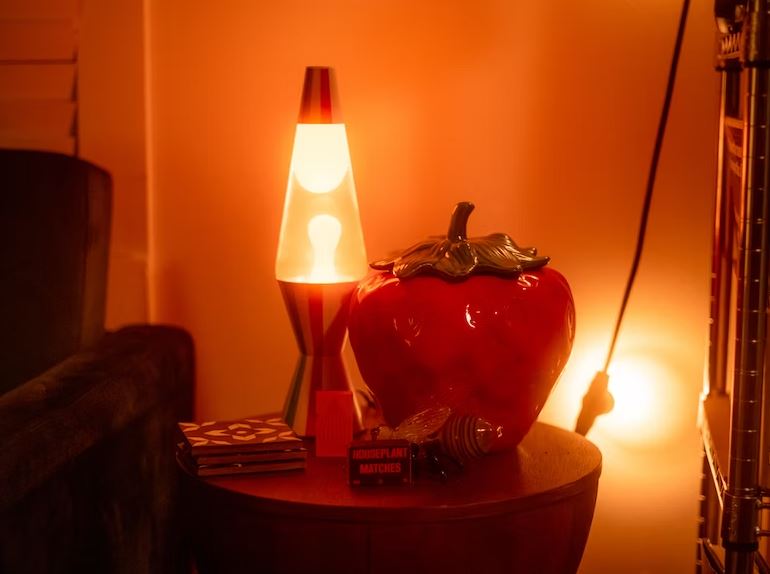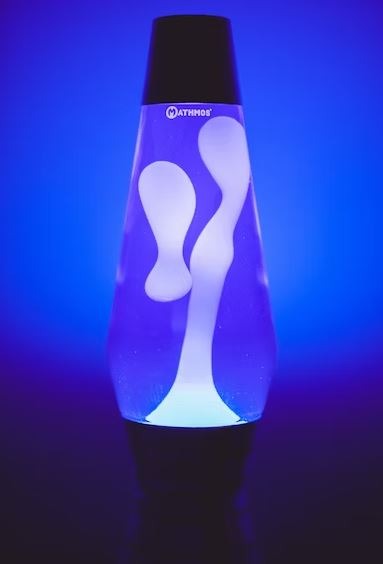There were many home décor items that became popular in the 1970s, but only a few are considered to be more iconic than the lava lamp. The lava lamp is a decorative item that features a transparent container that has two liquids of different densities inside. One liquid is translucent and primarily made of water, while the other liquid is a wax substance that is opaque and denser. Because the other liquid is denser, it would appear like it is floating upwards and downwards inside the lava lamp.
The lava lamp is arguably one of the most mesmerizing decorative items to look at, but have you ever wondered how this amazing piece of home décor was created? To get the answer, let us dive into the origins of the lava lamp, a popular decorative item in the 70s.
The Origins of the Lava Lamp
The lava lamp was created by an entrepreneur named Edward Craven Walker, who got the idea for the lamp when he saw a DIY egg timer while dining and drinking at a pub in England in 1963. The egg timer that he saw at the pub consisted of a transparent cocktail shaker that was made of glass and filled with water and a solid ball of wax. The cocktail shaker was then placed inside a pot that has an egg and boiling water. Once the wax has already melted and floated inside the cocktail shaker, it signifies that the egg is already done. [1]
Craven Walker was mesmerized by how the wax floated inside the cocktail shaker and wanted to make a decorative item that features a floating wax with a light bulb as a source of heat and light. With the light bulb also acting as a heat source, the wax inside the container would be in liquid form whenever the lamp is activated.
Craven Walker would then spend the next few years perfecting the formula that allows the wax to float upward and downward inside a container filled with water. In order to create a working formula, he hired a British inventor named David George Smith, who would then develop not only the formula of the wax and water substances inside the container but also the way the lamp heats up to liquefy the wax. The secret ingredient that allowed the liquified wax to move upward and downward inside the container is solvent carbon tetrachloride, which provided weight to the wax while still allowing it to have buoyancy.
In terms of being an actual lamp, it doesn’t really provide the same level of illumination in the dark as a regular lamp does. However, Craven Walker didn’t intend to design the lava lamp to be a proper light source, as it was designed to simply “create mood” and uplift one’s spirits by simply looking at the calming movements of the wax substance inside the lamp.
The lava lamp was first sold in 1963 by Craven Walker’s company called Crestworth. The company was founded by Craven Walker alongside his wife, Christine, and it was established in Poole, England. Before being called the “lava lamp,” the decorative item was called the “Astro Lamp.”
The Popularity of the Lava Lamp
It was in 1965 when Craven Walker sold the rights to manufacture and sell the Astro Lamp in the United States to a company called Lava Lite. [2] The Lava Lite company was founded by two American businessmen, namely Adolph Wertheimer and Hy Spector, who saw the Astro Lamp when they visited a German trade show in 1965. The two businessmen would then create the Lava Lite company in Chicago in order to sell their own version of the lava lamp in the US.
In just a few years, Lava Lite was able to sell more than seven million lava lamps worldwide, as the decorative item became a craze by the late 1960s and early 1970s. Lava lamps became so popular that they started appearing in various movies and TV shows, including an episode of the popular British sci-fi show Doctor Who that aired in 1968. Ringo Starr, the drummer of the legendary band The Beatles, was also reported to have bought a lava lamp in England. By the mid-1970s, lava lamps became popular gifts for loved ones. For more 70s-themed gifts, read our Nostalgic 70s Gift Ideas.
A Luxury Item Turned into a Piece of Hippie Décor
In the 1960s, the lava lamp was marketed as a luxury home décor item that served as a conversation piece among friends and family members. There were even ads that indicated that the lava lamp was a “living jewel,” because of its shiny exterior and luxurious design. It was also considered as a way to modernize the look of homes and offices since it looked high-tech.
However, when psychedelics or hallucinogenic drugs became the craze by the late 1960s, people started viewing the lava lamp as the perfect home décor item for hippies mainly due to how vibrant and color the lamp was.
The hippie movement of the late 1960s and early 1970s was filled with so much color, so it is already understandable how the lava lamp transformed from a luxury item to a piece of hippie décor, as the lamp is just as colorful and “trippy” as the hippie culture. It can also be argued that the movements of the wax substance inside the lava lamp mimic how “trippy” or disoriented people feel whenever they take hallucinogenic drugs.
Lava Lamp After the 1970s
By the late 1970s, the hippie culture eventually faded away, and lava lamps also experienced a decrease in sales and popularity. From selling more than seven million lava lamps in just a few years, the Lava Lite company manufactured 1,000 lamps per year throughout the 1980s.
Craven Walker, who was still handling business operations for Crestworth in the mid-1980s, sold his company to another entrepreneur, Cressida Granger, in 1989. Crestworth would then be relaunched with a new name, Mathmos. [3] The name of the company was derived from a fictional lake of lava that is found underneath a fictional city called Sogo, which appeared in the 1962 comic “Barbarella.” The said comic is a French sci-fi comic book that was created by a writer and illustrator named Jean-Claude Forest. The original run of the comic book started in 1962 and ended in 1978.
Mathmos Lava Lamp
It was Mathmos that revived the popularity of the lava lamp by the 1990s. However, Mathmos received help from “Austin Powers: International Man of Mystery,” a 1997 comedy film that served as a parody of the 70s and the James Bond spy films. It is through the said film that everything that is related to the 70s became popular again, and these include the lava lamp. In 1998, Mathmos sold more than 800,000 units, which is quite a lot compared to the sales of the lava lamp in the 1980s.
Thanks to the success of the lava lamp in the 1990s, Mathmos was able to expand its business to include different variants of the lava lamp. Here is a list of products that Mathmos is currently offering to customers:
- 1960s Original Lava Lamp – the original lava lamp that was designed by Edward Craven Walker. It features the same design as the Astro lava lamps that were released in the 1960s. However, there are versions that feature special exteriors that are made to look like copper, platinum, and vinyl.
- Neo Lava Lamp – this new version of the lava lamp has a sleeker design. It also has features that are tested safe for children and adults. This type of lava lamp can be placed on top of a table or desk, or it can be hung on the wall.
- Candle Powered Lava Lamp – this energy-saving lava lamp is powered by a simple candle that acts as a heat and light source for the lamp. The candle is placed at the bottom of the lava lamp’s container.
- Classic Rocket Lava Lamp – this type of lava lamp features a space race-inspired design that made it look like a small space rocket. The Classic Rocket Lava Lamp is available in two versions: electric and candle-powered.
- Giant Lava Lamp – this version of the lava lamp, as its name already suggests, is a larger version of the original that is designed to be used in public spaces and big houses to elevate the look of specific areas or rooms.
- Projector – the lava lamp project is an electric device that projects lava lamp wheels on a wall or ceiling. The lava lamp wheels are discs that contain the two liquids you would normally find in regular lava lamps, but they are more compact. In addition, these wheels are interchangeable, which means that you can change what the projector is showing by simply changing the wheel installed in it. Lava lamp wheels come in different colors and designs, and many of them are sold separately.
If you need replacement parts for the Mathmos lava lamp you bought, the company also sells spare parts and extras on its website. For more 70s-themed home décor items besides the lava lamp, check out our Nostalgic 70s Home Décor Ideas.
The lava lamp is one of the most interesting home décor items on the market. Even though it had already reached its peak in popularity during the 1970s, the lava lamp is still a great piece of home décor to have at home since it can fit well with any interior theme or design.
References
[1] Bennett, J. (2022, March 21). Learn How the Lava Lamp Became a Groovy Icon of 1960s Style. Better Homes & Gardens. Retrieved August 2, 2023, from https://www.bhg.com/decorating/home-accessories/lava-lamp-history/
[2] Lamps Plus. (n.d.). 10 Fun Facts About the Lava Lamp. Lamps Plus. Retrieved August 2, 2023, from https://www.lampsplus.com/ideas-and-advice/10-fun-facts-about-the-lava-lamp/
[3] Tucker, A. (2013, March). The History of the Lava Lamp. Smithsonian Magazine. Retrieved August 2, 2023, from https://www.smithsonianmag.com/arts-culture/the-history-of-the-lava-lamp-21201966/




